Namesake Cape of Good Hope Builder Lorient, France Christened SAS Good Hope Launched 5 March 1977 | Ordered February 1976 Laid down 12 March 1976 Construction started 12 March 1976 Length 80 m | |
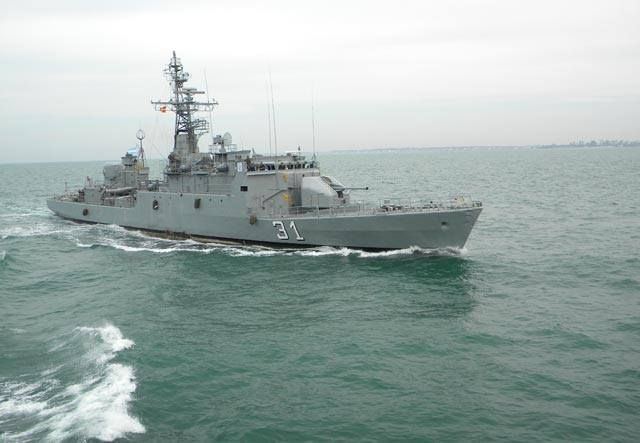 | ||
Class and type D'Estienne d'Orves class Aviso | ||
ARA Drummond (P-31) is the lead ship of the Drummond class of three corvettes of the Argentine Navy. She is the second vessel to be named after Navy Sgt Francisco Drummond.
Contents
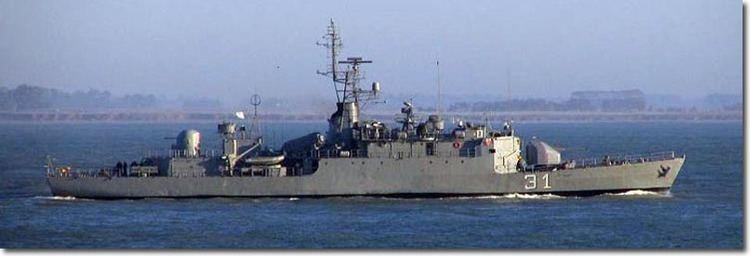
She is currently based at Mar del Plata and conducts fishery patrol duties in the Argentine Exclusive Economic Zone, where she has captured several trawlers in recent years. According to reports in November 2012 the Drummond class "hardly sail because of lack of resources for operational expenses".
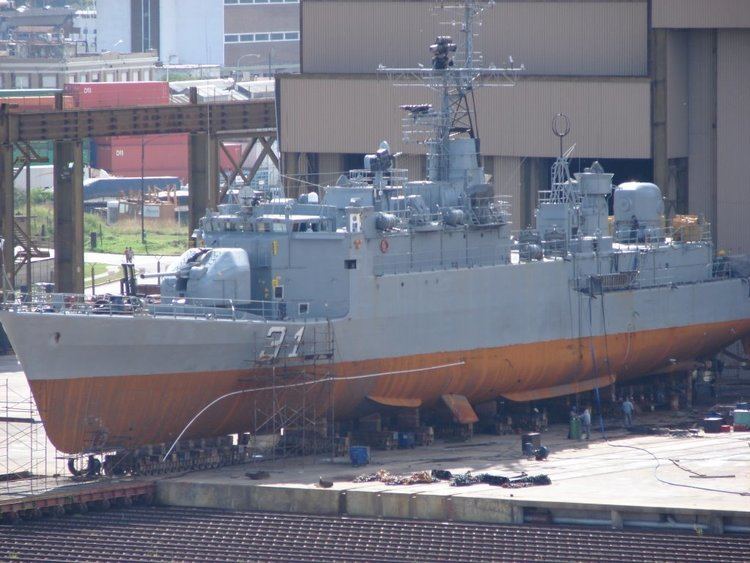
Service history
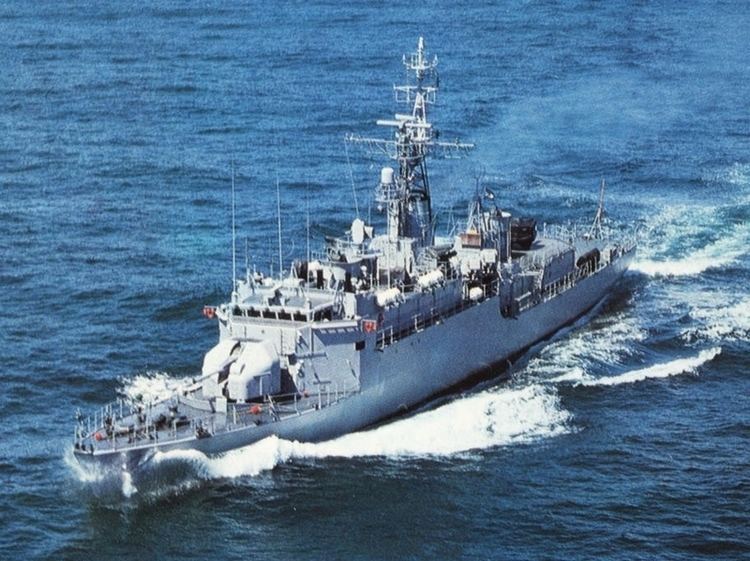
Drummond was built in 1977 in France for the South African Navy to be named SAS Good Hope but was embargoed at the last minute by United Nations Security Council Resolution 418 over apartheid. It was sold to Argentina instead and delivered on 9 November 1978.
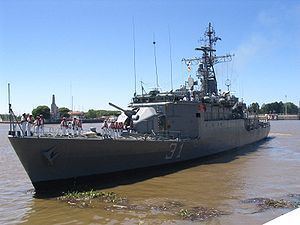
She carried the pennant number P-1 until the introduction of the Espora class corvettes in 1985 when she became P-31.
In 1982 she served with her sister ships in the Falklands War (Spanish: Guerra de Malvinas).
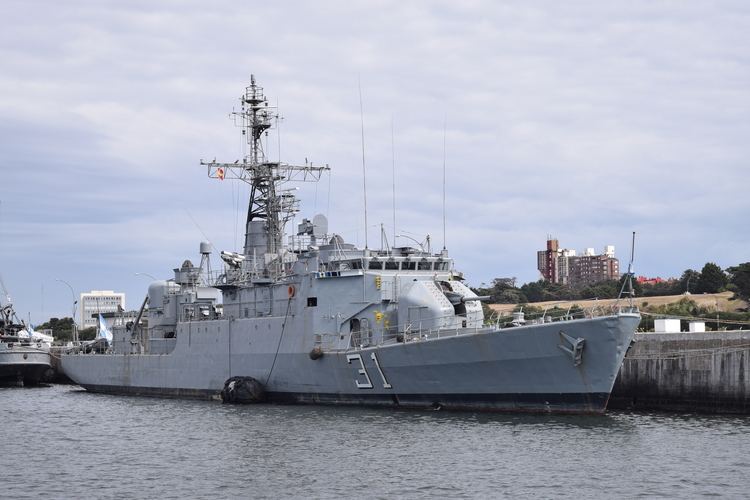
On 7 October 1983, during a live fire exercise off Mar del Plata, she sunk the old destroyer Almirante Domecq Garcia with a MM38 Exocet missile.
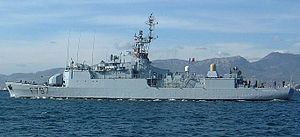
On 1994, from her temporary base at Roosevelt Roads Naval Station, she participated on the blockade of Haiti during Operation Uphold Democracy.
She had also served as support ship of the Buenos Aires-Rio de Janeiro tall ships races.
HMS York incident
On 25 February 2010 the British tabloid The Sun reported that the Drummond had been intercepted and shepherded away by the Royal Navy destroyer HMS York in the vicinity of the Falkland Islands. The story was published in the middle of a diplomatic dispute between the United Kingdom and Argentina about oil drilling, escalating the crisis as the "first head-to-head of the Falklands row". The British Ministry of Defence quickly issued a denial. A spokesman said the incident had occurred a month earlier, before the oil dispute began; both ships were in the same zone in international waters during rough weather at night, and, after a friendly dialogue by radio, each had continued on its own exercise.
